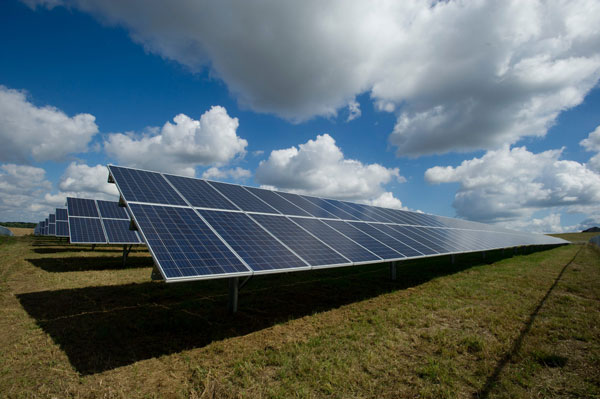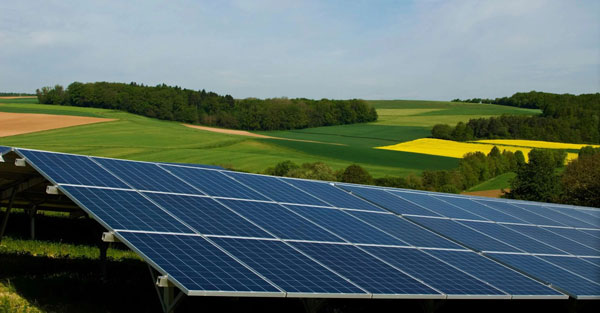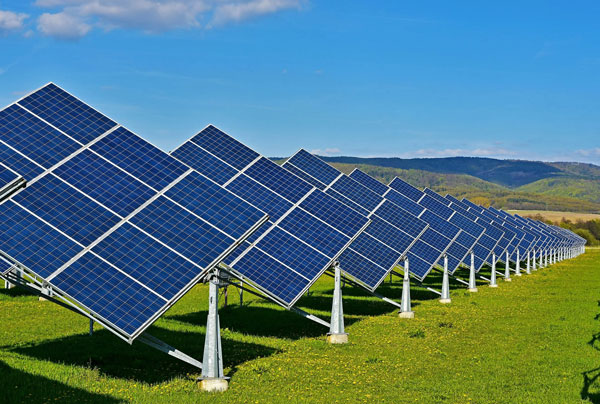Bifacial Panels And Their Advantages
Of which bifacial solar panels are one of the famous technology too. Bifacial panels ARc typical solar panels but with a huge twist- they have the added feature of obtaining sunlight from bith the front and back of the panel (as compared to traditional panels, which only capture sunlight from one side). With this, they can eliminate direct sunlight and use reflective sunlight from the vicinity (from the ground or other reflecting structures). This enables bifacial panels to produce up to 30% more energy compared to monofacial panels in the same condition.
Variability Optimization Benefits
Virtue of bifacial panels comes out in diffuse light conditions In areas with a lot of white snow, like Wanaka, the white ground acts as a natural reflector, boosting the energy generation of bifacial panels. In one study implemented in Alberta, Canada, instead of the normal panels, the utilization of bifacial panels produced 27% more energy during winter months.
Cost-Effectiveness Over Time
While the upfront cost of bifacial panels is usually greater than that of standard panels, the payoff over the life unit can be better. Detailed analysis has shown that in areas with a low albedo (ie high value for reflection coefficient) and with plenty of sunlight, a breakeven can be reached several years earlier. In a project in California the higher capital expenditure of using bifacial modules was recovered through increased energy yield in only five years, proving its technical and economic feasibility.
Modern Infrastructure Integration
This should particularly open up new urban opportunities for bifacial panels. When fitted on exterior of buildings or as part of sound barrier systems along highways, these panels serve not only as a source of power but also add value to the aesthetics of a structure and provide additional functionality. Bifacial panels were also built into a bus station in New York City under a pilot project where they provided shade and powered the lighting and digital display systems of the station, combining functionality with design.
Challenges and Considerations
Although bifacial panel has the characteristics and benefits mentioned above, there are some specific obstacles to take into account. A good installation will place the two sides where they can receive sunlight some of the time and planning for this is critical because these two sides are most influenced by light. Mounting systems additionally need to be designed to not impede the back side of the panels. Maintenance can be more problematic in parts with high dust or snow cover, as uneven covering 1 side or the other of your panel can badly drop effectiveness.

Anti-Reflective Coatings To Capture More Light
Solar panels have anti-reflective (AR) coatings to reduce sunlight reflection and increase the amount of light the solar cells absorb. Standard solar panels sustainer up to 4% to8% of incoming solar energy due to reflection without AR coatings and it is required because of this technology. There is a lot to gain from solar panel glass with AR coatings.
Increased Energy Absorption
Near-index matching AR coatings are tailored to the goal of minimizing losses through ensuring that a solar cell refractive index is matched with the surrounding environment (band 2). It decreases the quantity of light reflection at the air-glass interface of the solar panel. The AR coating for the panels achieved up to 3% higher total efficiency For instance, an Arizona solar facility reported a significant YOY increase in electricity production following the application of AR coatings to all their existing panels.
Implications in Costs and Installation
AR coatings are created by depositing a very thin layer of anti-reflective material (like silicon oxide or titanium oxide) onto the glass surface of solar panels using a sophisticated manufacturing process. The method is generally low cost and accounts for only a small fraction of the production cost of the solar panel as a whole. However, the benefits in energy production for the long term makes this a good purchase.
Durability and Maintenance
Several types of AR coating can not only enhance energy yield but also resist the harsh conditions solar panels face. Their purpose is to protect the panel from weathering and UV exposure in order to extend the life of the panel. Panels featuring AR coatings are equally as maintainable as the naked panel, so this technology is a common feature for either new installs or retrofits.
Applications and Benchmarks
The advantage of AR coatings is more theoretical for regions which receive slant sunlight at high latitude. In Scandinavia, solar panels have performed much better with AR coatings than the traditional kind, especially in low sun angle months, this means an increased energy capture through the full daylight hours, all year round.
Smart Inverters For Better Energy Management
The Transformative Technology
Smart inverters represent important advancements in the solar industry as utility companies are tasked with integrating solar energy into existing power grid infrastructure.
Compared to conventional inverters, smart inverters can do more than just change the type of electricity that is connected from DC power to AC power; they also offer these features and capabilities: A smarter way to manage reactive power An ability to monitor how much energy flows in and out in real time The possibility of changing their behavior on the fly to accommodate grid requests This technology is critical in stabilizing the grid, and it improves the efficiency of solar energy systems.
This allow us to provide improved grid stabilization and efficiency
In the top virtual power plant, all the solar panels deliver the same voltage and frequency thanks to smart inverters. This way the provide grid stability, specifically in cases where renewable energy forms an important part of electricity supply. In California has been successful in managing the mid-day peak solar output using smart inverters to avoid a rapid ramp-up of fossil fuel plants during the evening hours.
Real-Time Energy Management
One of the unique features offered by smart inverters is their capacity to monitor the grid and to provide real-time responses based on grid conditions. It also allows the equipment to sense grid issues like overvoltages or frequency deviations, then respond by reducing its power output or disconnecting from the grid temporarily to preserve the system and the grid itself. This is an issue the Germans have been attacking - one of the ways they are driving towards 30% faster response times to grid disturbances is by installing only smart inverters in country.
Remote Control and Updates
They also have communication abilities they can be updated over the air, get firmware upgrades in the field and can be managed from grid management systems. This is important for accommodating new or evolving grid policies and operational requirements without requiring physical changes or replacements. Essentially, systems employing smart inverters completed a pilot project in short order (within days) to ensure compliance with new grid codes in Australia.
Effects on Solar Energy Use
This removes a large hurdle for the widespread adoption of solar technology as smart inverters improve the compatibility of solar systems with the established power grid. This allows more individuals and businesses to install solar power without potentially destabilizing the grid. In the U.S., the wide-scale deployment of smart inverters has proven to unlock the urban solar market by series of factors: lowering per-kilowatt (kW) costs.
Robust Frames For Harsh Weather Conditions
Strong frames for solar panels that can withstand weather conditions. These frames are built to last in conditions of high wind, snow, or other environmental conditions that could otherwise harm the integrity and performance of the solar panel. Materials like anodized aluminum and fibre reinforced composites will enable manufacturers to boost the longevity of solar installations by a manifold.
Design Specifications and Material Selections
Frames must be designed to be strong enough to withstand the forces and stresses experienced, while also being light and corrosion resistant. Anodized aluminum is a go-to solution for its durability to weight features and its natural ability to resist corrosion, making an ideal choice for commercial applications in salt-rich coastal areas. In Florida, aluminum-framed solar panels have survived category 5 hurricane-force winds.
Quality Testing and Certification Standards
These frames need to meet certain industry standards before being classed as appropriate for harsh environments. Their testing has to involve extreme weather exposure to assure that they can sustain structural integrity and can load the panels. A prime example is the IEC 61215 certification process that subjects solar panels to the types of stress that solar panel frames need to withstand in the real world, such as thermal cycling and damp heat exposure.
Impact on Panel Efficiency
A durable frame is not only used as a strong foundation but also it maintains the efficiency of solar panels. By keeping the panels in the best possible position and angle, even through the heavy weather months, the frames are working to increase the sun hitting the units. A study in Ontario found that durable frames continued to operate at more than 95% efficiency throughout the winter months.
Standards Integration Installation Practices
Solar panel systems specifically require robust frames that are integrated during the installation process in order to ensure maximum efficiency. Factors such as mounting angle, direction and possibilities of snow and water accumulation need to be adequately accounted for during the installation process. Correct installation means the frames provide support only, without compromising the panel in terms of performance or safety.

Energy Monitoring Systems For Real-Time Data
Energy monitoring systems are critical for increasing the function of solar panels and efficiency cause they have a real-time system for energy supply and utilization. Powered by sensors, smart meters and available in cloud-based platforms Three phase Panels / MCC / Conveyer Belts / Compressors monitors real-time inputs like voltage, current, power generation, and environmental factors with valuable insight for making decisions and improving operation.
Components and Functionality
Energy Monitoring System: An energy monitoring system comprises sensors, data acquisition unit and connectivity solutions connecting solar panels to a central monitoring platform. These sensors collect information all the time, which provides thorough information regarding the systems performance. In a recent deployment in California, sensors identified a 5% loss of efficiency caused by dust buildup, alerting human workers to clean and restore performance.
The Advantages Of Real-Time Monitoring
Real-time monitoring offers the ability to act fast if inefficiencies or equipment problems develop. This can help in maintaining and enhancing peak performance by avoiding long-term stresses where panels underperform and the lifespan of solar panels becomes less. An Arizona energy provider changes the angle of its solar panel automatically to get as much energy as possible during the day based on the position of the sun by using real-time data.
Analysis and predictive maintenance
Data collected is analysed using advanced analytics to forecast future trends and potential issues before they escalate to become significant issues. The beauty of predictive maintenance techniques would be in the scheduling of maintenance based on actual usage patterns and abnormalities detected, not on the generic timelines. One such example that demonstrated a 20% decrease in maintenance costs was on a solar farm in Texas which used comparable predictive maintenance tactics that targeted specific panels showing signs of degeneration or inefficiency.
Integration with Grid Systems
Energy monitoring systems also allow for solar energy to be fed back into the grid. These systems before grid operators in real time to assist in the management of the rapid variability of solar power to stabilize and improve reliability. In a test demonstration in New York, an advanced monitoring system enabled a solar plant to respond to grid operator demand signals to provide grid balancing by modulating its output.





